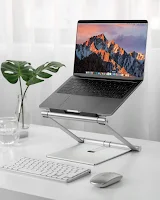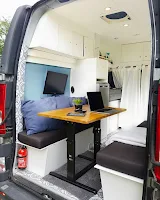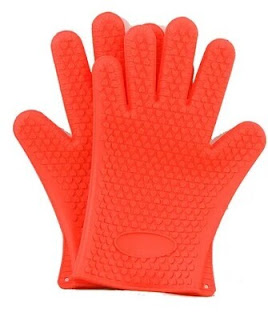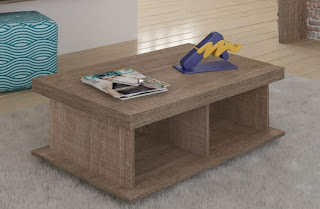A guide to setting up a home office for remote work effectively
A guide to setting up a home office for remote work effectively
Working from home is hardly a new phenomenon, but the COVID-19 pandemic
has made it an unplanned requirement for many office and knowledge workers
But many
people have set up makeshift home offices after the pandemic that won’t
work well for the long term. In addition to having the right equipment, the
physical setup — the ergonomics of the workspace — is critical, especially
around avoiding repetitive strain injuries that a bad setup can cause.
An ideal home office setup
A
long-term home office should ideally be a separate space in your home that is
properly outfitted for work. Do as much of the following as you can to create
an effective, safe workspace for the long term.
A dedicated space
Ideally, you would use a
small room that can hold a desk and computer equipment and whose door can be
shut for the essential need to separate work life from home life.
Most
people don’t have spare space, but many people can convert a guest room into a
dual-purpose space: an office most of the time and a guest room when people
visit. An enclosed porch, a large
laundry room or even a garden shed can also do the double-duty trick.
If you
can’t get a dedicated space you can separate from the rest of your life, try to
find a niche space you can use that is out of the rest of the household’s way —
and they out of yours — as much as possible.
Proper work height
Your
space needs a desk or table that is at work height. The industry standard is 29
inches from the floor to the top of the work surface. Tall people do better
with a higher height, and short people do better with a lower height. Many
desks and tables have adjustable height, usually through their feet.
But that
industry standard is based on writing on paper, not using a keyboard and mouse.
That’s why keyboard trays pull out from below the work surface and are typically
an inch or two lower than the desk or table height. If you have space for a
keyboard-and-mouse tray (it must be wide enough for both!), get one. If not,
consider lowering your desk to the tray height; if you also write on paper, you
can get a writing surface (such as a thin cutting board) for pen-and-paper
work.
You know your work surface is at the correct height if, when you sit up straight, your forearms are parallel to the ground and your wrist is not bent up or down when you type or mouse. The top surface of your wrist should essentially be on the same plane as the top of your forearm, with your fingers dangling slightly down to the keyboard. Bending the wrists for prolonged periods is an easy way to cause injury. Standing desks are now available in motorized design.
Proper monitor height
Get a
large monitor (maybe two) for your home office — just as you would at the
corporate office. I’ve had good luck with 25- to 27-inch monitors from Asus and
Acer, but any major brand will offer high-quality monitors. Just avoid the
cheapest monitors if you can, since they can lead to eyestrain over prolonged
use due to their lower resolution and thus increased fuzziness.
Generally
speaking, check your computer’s video specs and get a monitor whose display
resolution matches its maximum capability. For the best video quality, you want
computers and monitors that support HDMI 2.x, DisplayPort, or USB-C connectors.
Because you likely already have a computer, such as a work-issued laptop, focus
on getting a monitor whose specs meet or exceed what your computer can deliver.
Your
monitor should line up so that if you look straight ahead when sitting straight,
your eyes are at a height of 25% to 30% below the top of the screen. That way,
you keep your shoulders level and don’t hunch your back — two easy ways to
cause injury.
To get
the proper height, you’ll likely need a riser for the monitor — I use two, which
also gives me some handy shelving. A monitor whose height is adjustable is a
plus, though you may still need a riser.
Tip: Be
sure to measure the desired height of the monitor from the work surface, so you
know how much of a rise you need between the work surface and the monitor stand
to get to that “top is 25% to 30% above eye level” target.
A good chair
There
are a lot of bad chairs out there that can injure you over prolonged computer
use. Dining chairs and deck chairs, for example, rarely are at the right
height, and they don’t always encourage the needed upright posture.
If you can afford it, get an adjustable professional office chair, where you can set a precise fit for your body and workspace. But those typically go for Kes. 60,000 and up; there are also much cheaper office chairs — figure between Kes15,000 and 29,000 — that will do the job. Check here for affordable office chairs
You’ll need to test them out in person if at all possible, since you can’t tell fit from a picture on a website.
Be sure to get one with adjustable height, that can roll, that provides lumbar support for the lower back, and ideally has adjustable seat pan tilt, arm height, and lateral arm position. An arm rest is preferable, but only if you use it correctly: That means your forearm should rest very lightly on the arm rest; there should be no pressure from your arm onto the arm rest. The arm rest basically should remind your arm to stay in the right position, not support its weight like a seat does your butt.Desk Organizers
Desk organizers1help you to manage tools and paper on your desk top. Choose a desk organizer that goes with your colour theme, and has the right size to manage all your tools and paper.
Good lighting
It’s
very easy to underestimate the effects of your work environment on your ability
to work. Lighting is often an area people don’t think about. Ideally, you have
sufficient indirect light to illuminate your workspace, so you can easily read
papers and see physical objects. Overhead lighting is usually best, such as
from a ceiling lamp.
Indirect
lighting means
lights not in your direct field of view or reflecting off your monitor. For
example, an outside window behind or to the side of your desk can create glare
on your monitor screen when the sun is shining. Natural light is quite
pleasant, but diffuse it with shades or curtains so it doesn’t create glare.
Don’t
place a lamp right next to a monitor, where you end up with competing light
sources and possible glare. You may need lamps for additional lighting, but if
possible, place them in a way that they don’t create glare on the monitor
screen and are not in your direct field of vision when you’re working on the
computer.
Likewise,
make sure your monitor’s brightness is not too dim or too bright, both of which
can cause eyestrain. “Too dim” and “too bright” are subjective, of course, but
a good rule of thumb is that the monitor’s lighting intensity should be just a
little brighter than your ambient lighting, and that ambient lighting should be
sufficient to read paper documents without additional light.
Good internet service
Most
urban and suburban areas have at least one high-speed provider for internet
service; 50Mbps is the minimum speed to shoot for, and the more people using
the internet at the same time, the more you want to get a higher-speed service.
The
bandwidth within your home matters too. The best connections are wired Ethernet
ones, so if possible, connect your computer to your router via an Ethernet
cable; that’s especially important if you do video or other bandwidth-intensive
work. Wi-Fi is fine for basic office work, so if you can’t wire your computer
to your router,
Other equipment
You’ll
need a Keyboard and a Mouse or touchpad, of course: If you’re using an external monitor,
your laptop is likely folded shut or off to the side in a position that would
be awkward to reach to for using the built-in keyboard and trackpad. Any
keyboard and mouse or touchpad/trackpad are fine as long as they are responsive
to the touch and not the wrong size for your hands or the wrong height for your
posture. Wireless ones save you cable mess but require recharging or battery
replacement. Of course
you will need Laptop riser stand if you
are constantly using a laptop.
And
definitely do not cradle a desk phone or cell phone in your neck! That’s a sure
way to pinch a nerve or cause muscle strain. If you use a traditional desk
phone, get a headset designed for it plus a 3.5mm-to-2.5mm adapter so you can
also connect the 2.5mm phone headset plug into the computer’s 3.5mm audio jack.
Note: Be sure your computer and monitor and/or dock support two-way audio (mic
and headset), not just audio-out.
You
could use wired or wireless earbuds instead of a headset, but the in-ear
variety can be uncomfortable, even painful with long-term use for many people.
(By contrast, a headset rests over your ear on a cushioned pad.) Also, wireless
earbuds typically have poorer audio quality in their mics, making you harder to
understand in meetings. Earbuds are fine in a pitch, but if you are on meetings
for hours a day, use a headset or the computer’s audio instead.
A docking
station is a great to have if you use a laptop, so you can plug the
computer into the dock and leave all the other connections alone, then easily
remove the laptop when you are working elsewhere such as for business travel or
an in-office visit. Most office-class Windows laptops have a docking station
option.
Many people
hardly use paper any longer, so you may not need a printer. Even though my own
use has diminished over the years, I still recommend getting a multifunction
printer/copier/scanner for your home office. A good laser version from
Brother or HP costs just a few hundred dollars, and when you need to print,
copy, or scan, you can. (Laser versions are much cheaper to operate than inkjet
ones, they last for years, and they don’t suffer the dried-ink problems that
often happen in inkjet devices that are rarely used.)
My
multifunction printer has a fax port for sending and receiving faxes, so I
route my desk phone line through it. (The printer can detect faxes and send
other calls onto to the phone.) I can’t think of the last time I needed to send
or receive a fax, but if you do, get a multifunction printer with fax support.
You
might consider a surge protector or, if you're not using a
laptop, an uninterruptible power supply (UPS). If the power goes
out, computer equipment is usually unharmed, but if you live in a stormy area,
there's a small chance you might get a power surge that could damage your
computer equipment. A power strip with a built-in surge protector is an
inexpensive insurance policy for that rare event.
A UPS is
harder to justify. If you have a laptop it has its own battery backup, so the
UPS is unneeded. If you have a desktop PC, a small UPS can buy you enough time
to safely shut down your computer and complete any saves. A large UPS can let
you work for an hour or more, but of course if your power is out, you almost
certainly won't have internet access, so the need is slight.
I do
recommend that you have computer backup. The Backup and Recovery feature in
Windows 10, like the Time Machine feature in macOS, makes backing up easy, so
get an external drive to use it. But an even better backup
method is to store all your work on a cloud service like
OneDrive or iCloud, so if your computer gets damaged or lost, all your work is
easily available from another computer. Macs and Windows PCs keep a local copy
of the cloud-stored work by default, so if the internet goes out you still can
work on your files; they will sync once the internet access is restored.
Combining cloud storage with a physical backup provides the best assurance that
you have your files.
Note: If
you use OneDrive, be sure to not use the Files on Demand feature, which when
enabled doesn't keep a full set of files on your computer but instead pulls
them from the cloud as needed. (Some IT organizations force Files on Demand to
be enabled, in which case working locally might be smarter.)
The traveler’s portable
office setup
If you travel for work, as
I often do, you can’t bring your home office with you. But you can improve the
workspace so you can work more effectively and safely with your laptop.
Tip: The
portable-office setup also can work well when you are working in a temporary
home space, such as your kitchen table — especially if you can also add a
larger monitor to the mix. It also works if you can’t get a large monitor and
must use your laptop screen in your home office.
The key
piece of equipment for an ergonomic setup on the road is a foldable monitor stand. (Foldable bed tables work well too.) Be sure to find one
that is not too thick when folded, so it fits in your luggage.
When you’re at a hotel desk
or at someone’s office, you usually can’t choose your desk, table, or chair.
And you likely won’t get an external monitor. But you can adjust the height of
your laptop screen with a foldable monitor stand. You may also need to use
books or something else to augment that stand, depending on the table or desk
height and the type of chair you have. Even if you can’t get a perfect height,
you can get a better height — and you should aim for that.
To make
this setup work, you’ll need a travel keyboard and mouse, of
course. Thin ones fit better in a suitcase. Just remember that if your input
devices are wireless, you must remove their batteries before placing them in
checked luggage for a flight. If your devices’ batteries aren’t removable, you
need to pack them in your carry-on luggage.
Also carry a small bag of
adapters when you travel. They include video
adapters, so you can
plug into pretty much any monitor or conferencing display. (My USB-C MacBook
works nicely with a video hub, so you have one adapter to carry instead of several.) Also carry USB-C-to-USB2.0 adapters in case you need to use a thumb drive, someone else’s keyboard and mouse, or some
other unexpected external device during the visit. When you travel overseas, you also need a multi-country power adapter that includes two USB ports so you can charge the phone and tablet from the
same plug.
Nairobi Shopping Guide
July 2023
#Home office









Comments
Post a Comment